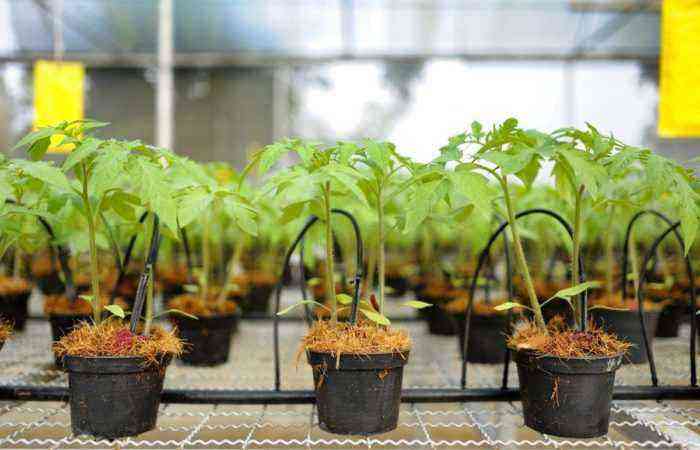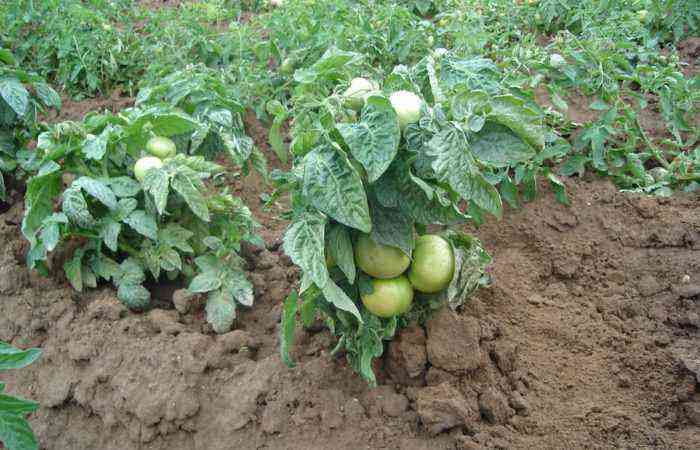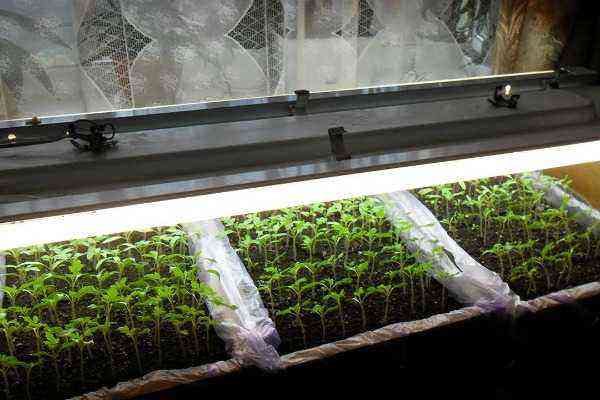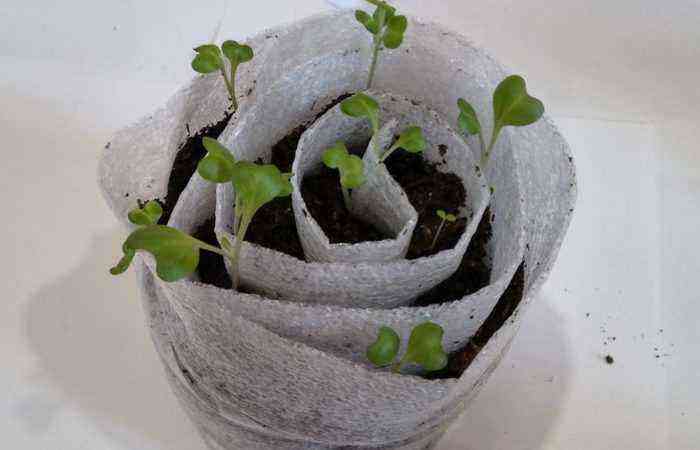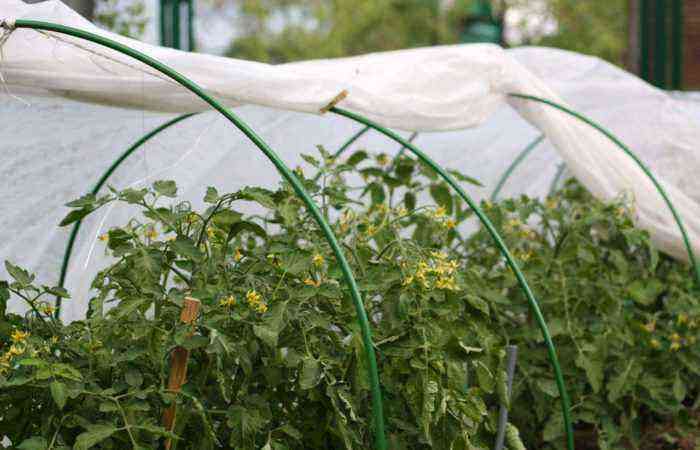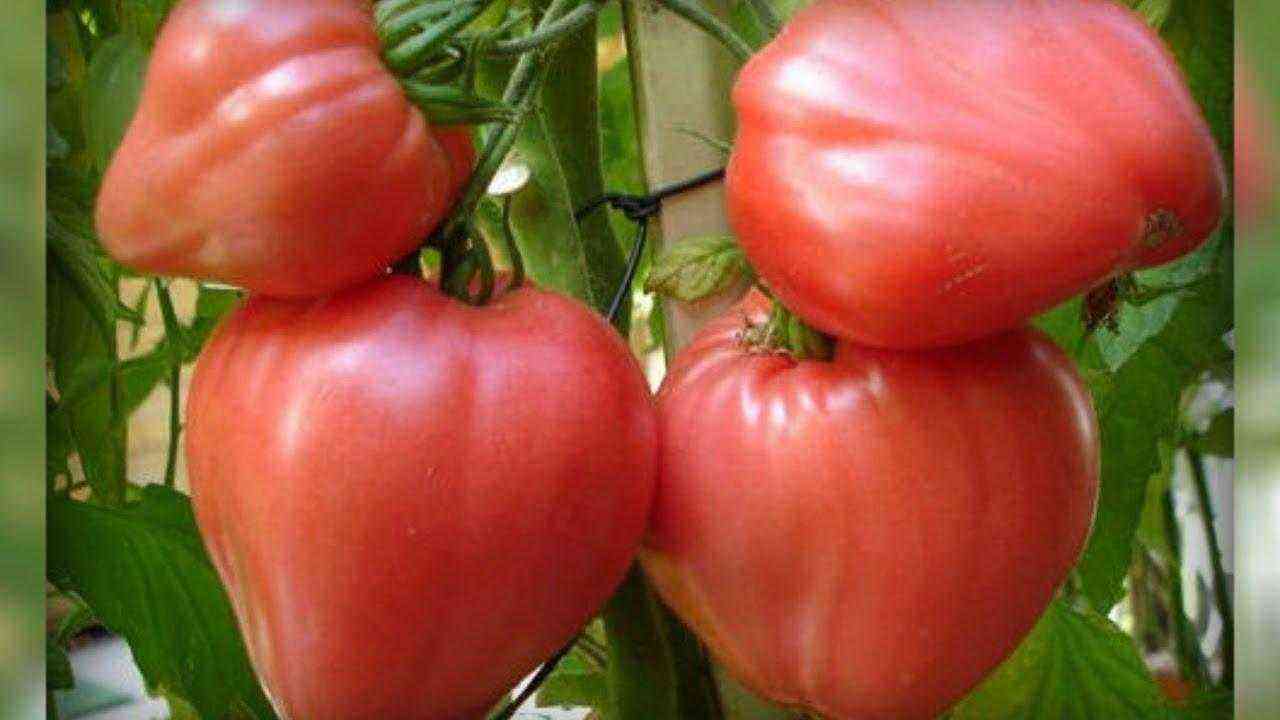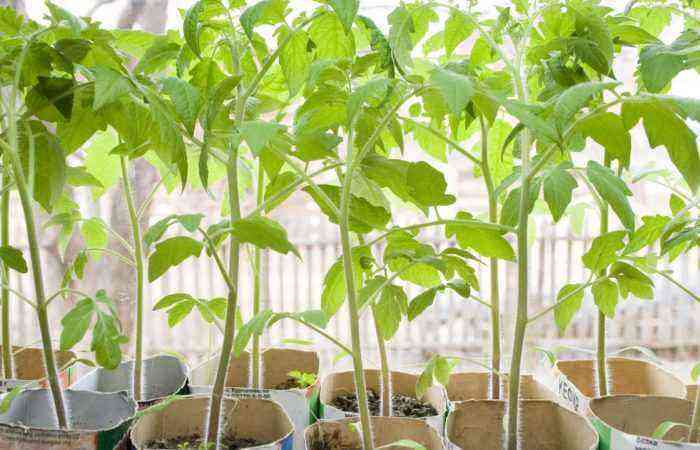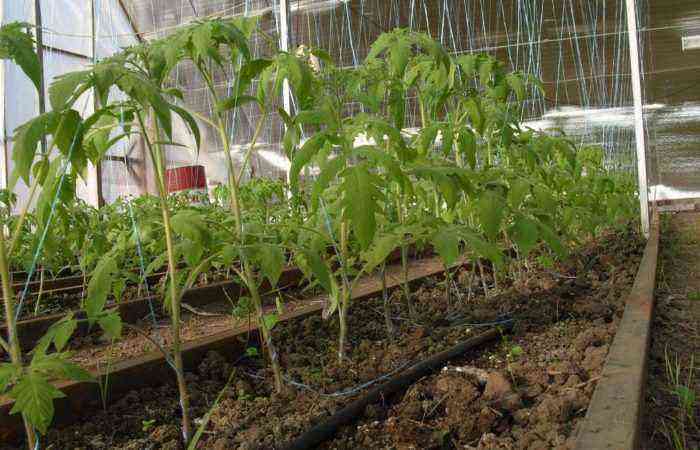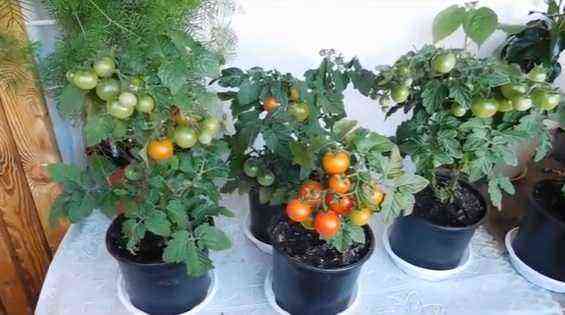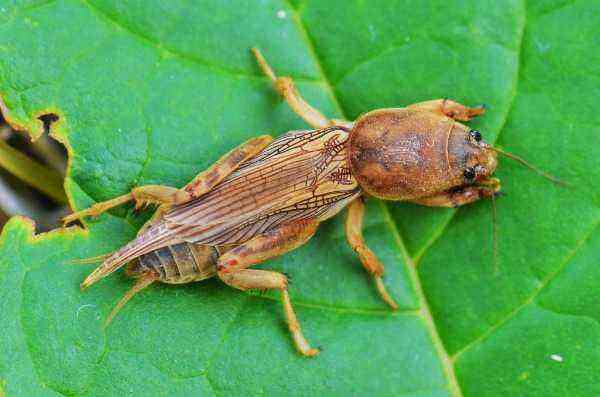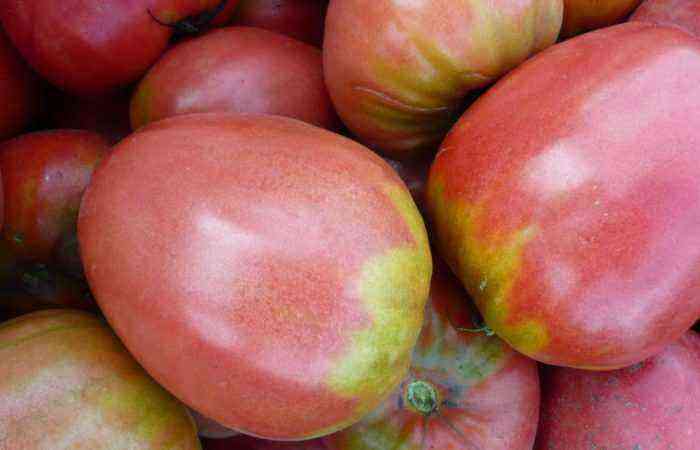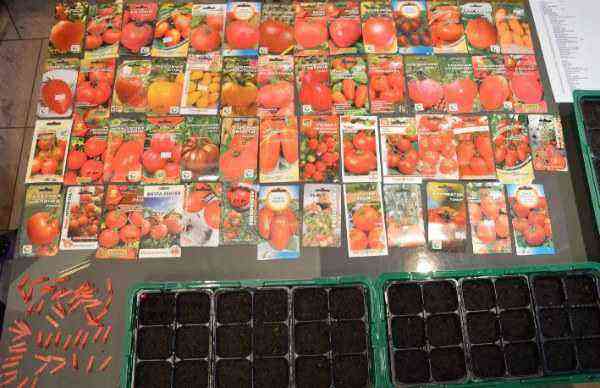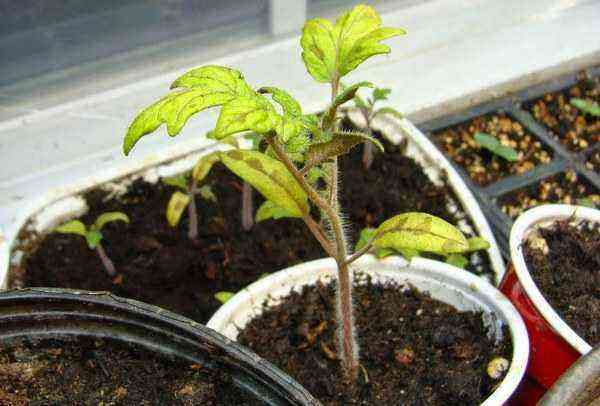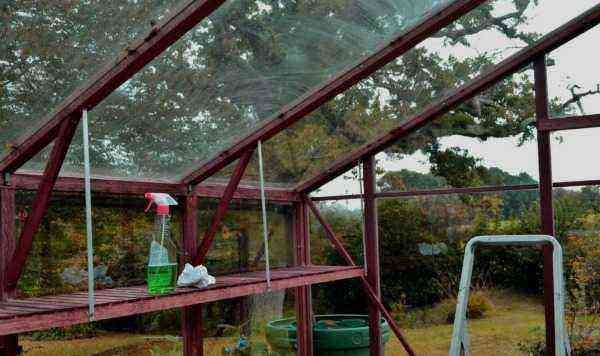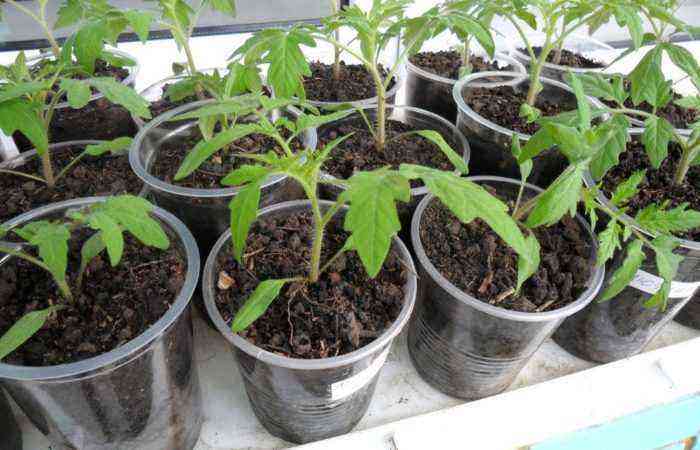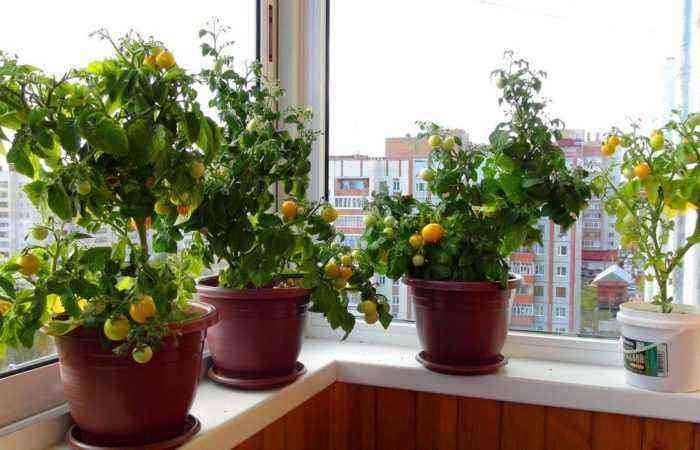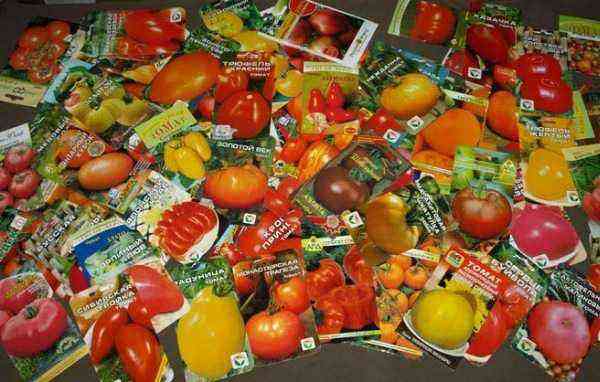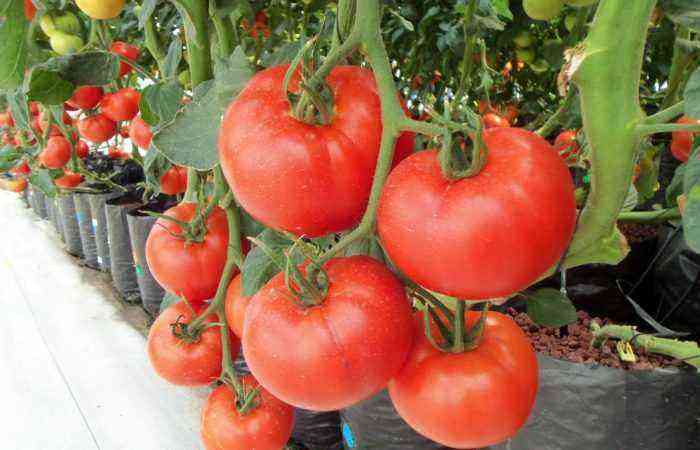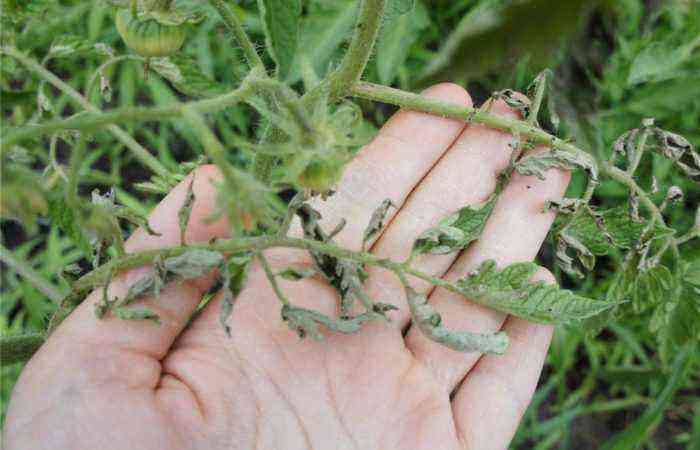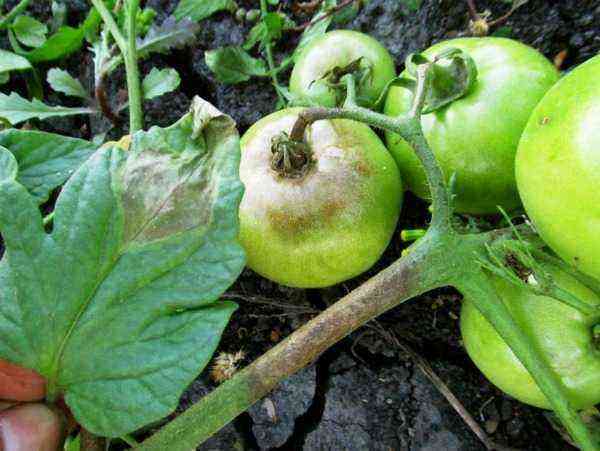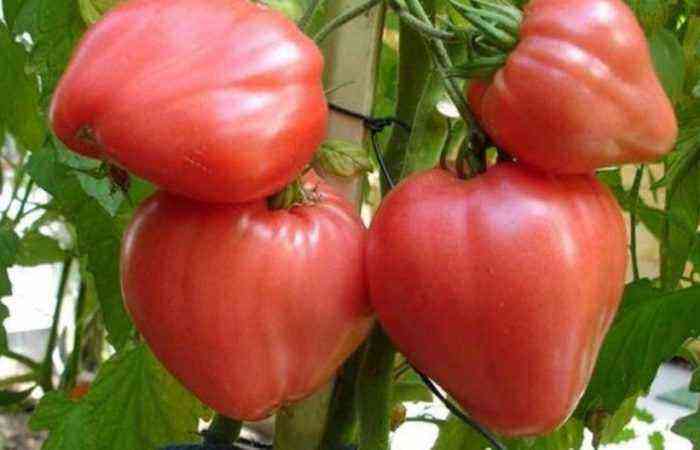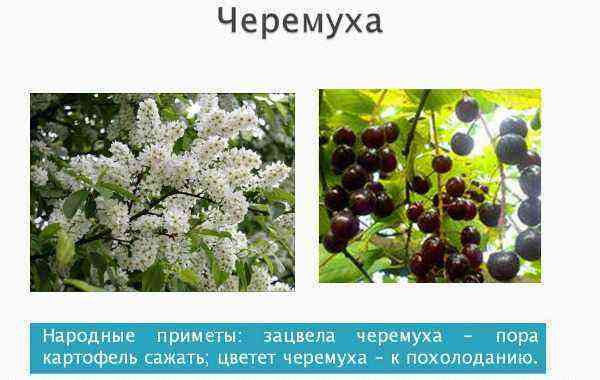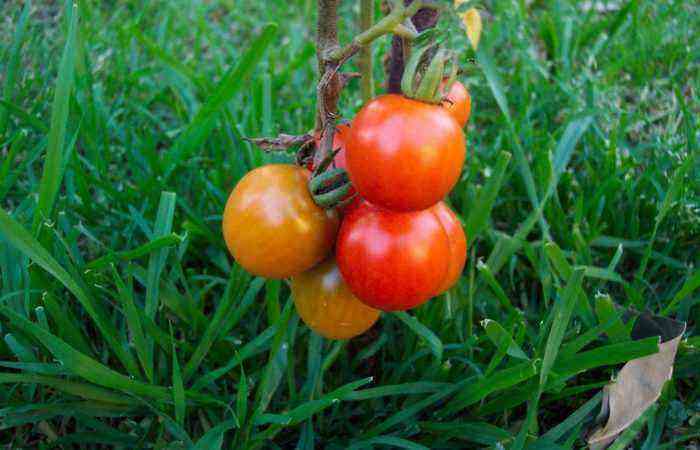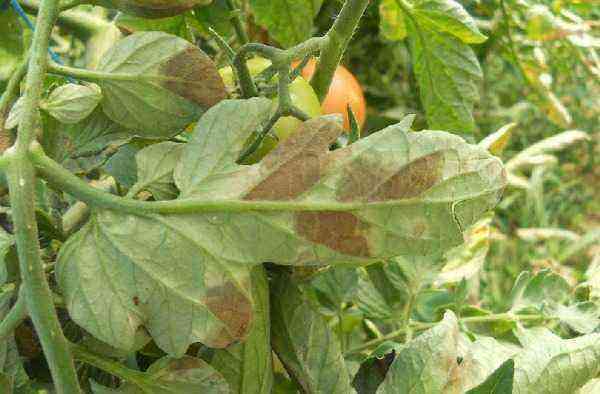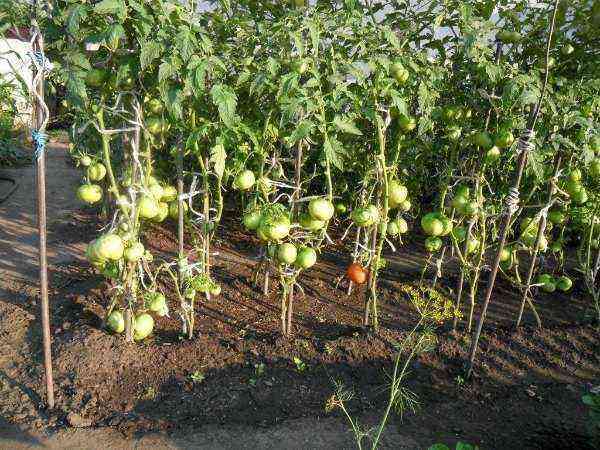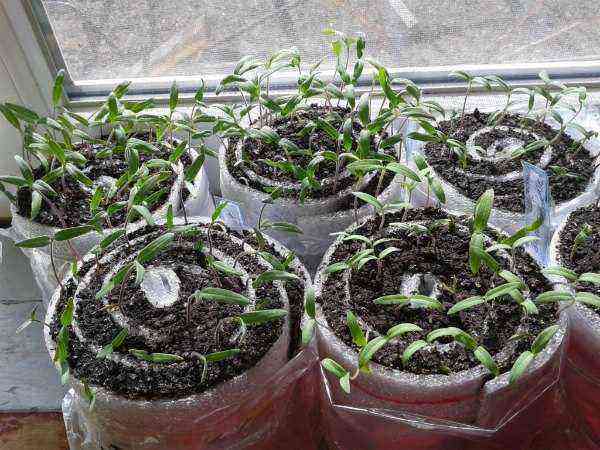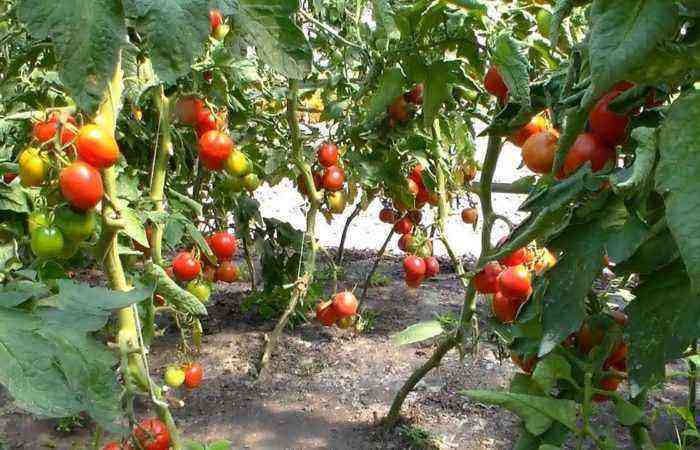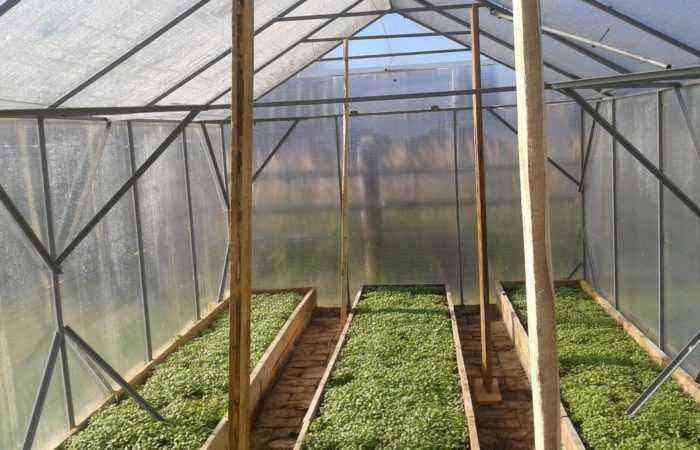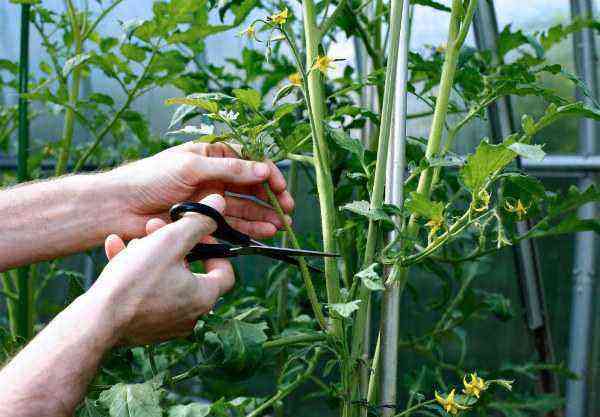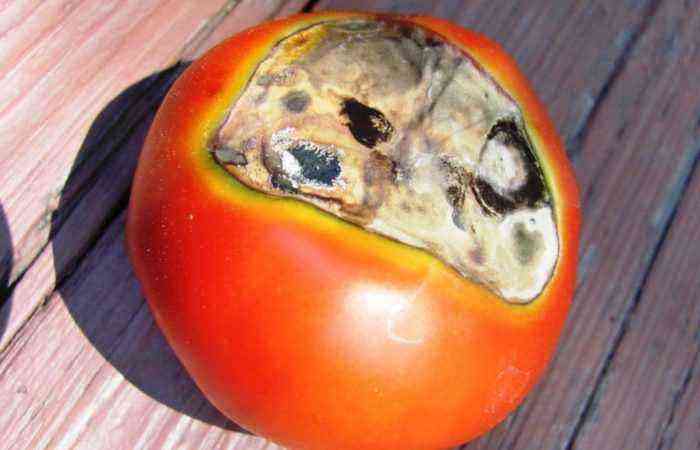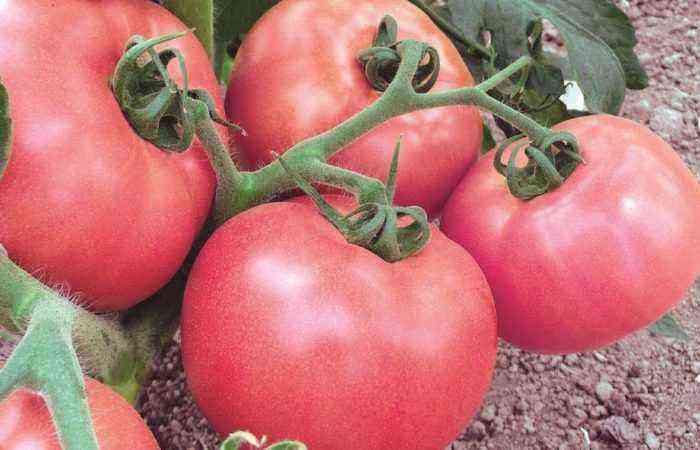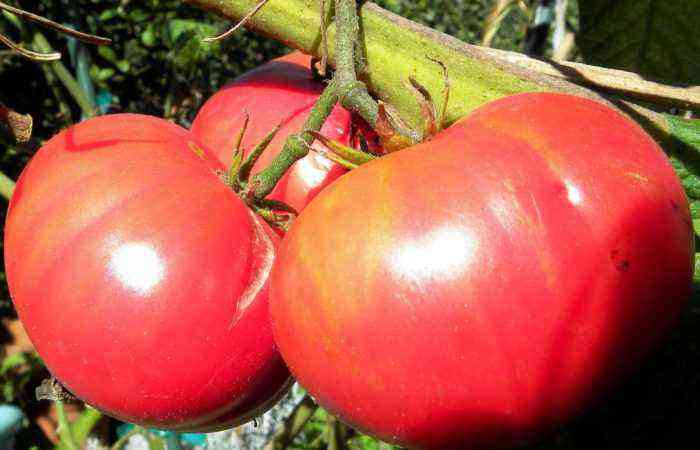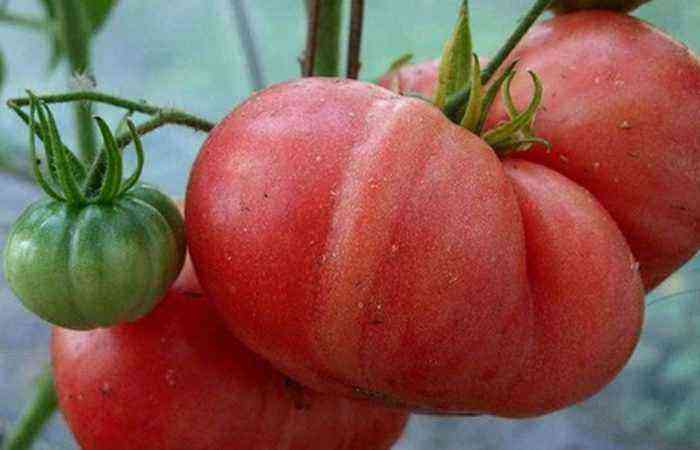In order for such a demanding crop as tomatoes to please gardeners with a harvest of healthy fruits, it is necessary to follow the entire cycle of care measures. One of them is tying, which is necessary to support the bush and prevent branches from lodging on the ground.
Tying methods may differ when grown outdoors and in greenhouses, so you need to learn in detail how and what to do.
When to start tying tomatoes and whether to do it

Before you determine the start date for tying tomatoes, you should figure out if all varieties need it. Indeed, indeterminate and determinant cultures differ in their needs.
- Determinants are low- or medium-sized tomatoes. Low-growing, or standard, varieties do not need a garter, they have a strong thick stem and strong branches that hold grown fruits. Medium-sized tomatoes can be tied up once to prevent branches from breaking off under the weight of ripe fruits.
- Indeterminants – always tall (or as they say “not limited in growth”) tomatoes. They are mainly chosen for growing in greenhouses. Such tomatoes are beneficial for greenhouse cultivation, since in a limited area you can get a larger yield from them than from standard or medium-sized determinant varieties.
The exact time when you need to start tying up the tomatoes is determined by the greenhouse itself. More precisely, the garter should be done immediately, as soon as the seedlings begin to pull themselves up into growth.
If the tying of each sprout is not carried out directly, then it is already necessary to install trellises if trellis tying is supposed.
The assertions of some gardeners should not be taken seriously that tying is superfluous and from the evil one, since nature itself knows what to do and how the plant grows.
But the fact is that tall indeterminants are already the work of human hands, hybrid cultures. And greenhouse cultivation is even more artificial. Therefore, you should not rely on nature, and having intervened in it once, monitor the fruit of your hands and provide tomatoes with everything you need.
Why tying is needed:
- Indeterminants must be stepson – this procedure is much easier to carry out when the plant is tied up;
- Tied tomatoes will not break from the weight of ripe fruits;
- On tied branches, tomatoes are protected from lodging on the ground and subsequent damage by slugs and other ground pests, from decay and late blight;
- Tying facilitates the correct root watering of the plant – this is impossible to do with lying shoots;
- Harvesting is much easier and more pleasant from tied up bushes than rummaging through tomato lashes lying on the ground.
What materials to choose for a garter

Contrary to popular belief about the benefits of natural materials, when choosing a garter, artificial materials are absolutely preferable. The main thing is that they are not susceptible to bacterial diseases (whereas wooden pegs easily rot in the humid atmosphere of greenhouses) and, due to this circumstance, are more durable.
But even among artificial improvised means, not all are suitable for tying.
A common mistake is to use wire, thin twine, fishing line and thick artificial thread for tying tomatoes.
These are all thin materials, and as the tomato bushes grow, such a garter will pull the stem, cut into it. Nothing good will happen in this case.
A plant “cut” in this way will feed worse, the stem will lose strength, eventually the yield will deteriorate or the fruits will not ripen at all.
- Wide (4-5 cm) fabric strips are much more convenient: they gently support the plant.
It is better to take synthetics for this: although old sheets or cotton clothes can always be found with everyone, they can also become a haven for pathogens of bacterial infections.
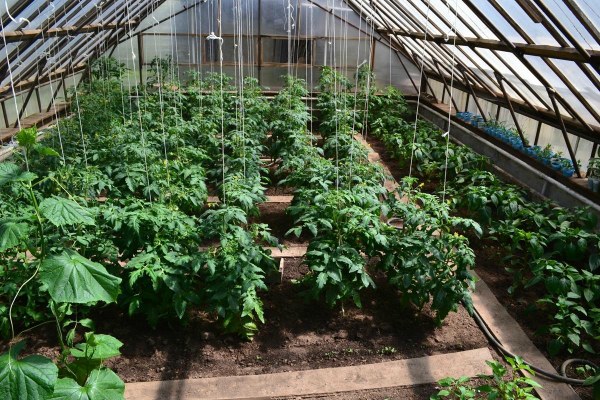
But such comfortable synthetic clothing as stockings and tights can serve faithfully for many years – while cotton garters are destroyed during one season.
- Nylon, nylon and other products, cut into comfortable strips, are removed at the end of the season and must be disinfected.
You can simply wash them with laundry soap, it is enough for someone to pour boiling water over them, and some soak the strips for tying in Whiteness or other similar means. One such treatment is enough before the start of the next season and the use of fabrics.
- Another remedy is plastic clips that can support both the entire stem and individual fruiting brushes.
- Finally, you can use a reliable friend of growers – a device for tying the vine. That’s what it’s called – a binder. Outwardly, it looks like a large stapler, and with its help the support and stem of the plant are wrapped around the tape.
In addition to directly garter materials, there are also supporting devices – those on which tied plants are attached.
It can be:
- metal constructions;
- plastic structures.
They are used in the form of pegs, shield nets, frames.
How to tie correctly, diagram

The garter scheme is correctly selected, depending on the characteristics of not only the directly grown tomato, but also on the characteristics of the greenhouse.
Although the material of the greenhouses itself does not matter: in a polycarbonate greenhouse, tying is carried out in exactly the same way as in film and glass.
- Proper tying is tying at the seedling stage. A later procedure may injure the growing bush.
- The second prerequisite is constant monitoring of growth in order to have time to make a secondary tying before the stem can lie on the ground.
Bushes are tied up both individually (pegs) and in bulk (all other methods).
How to tie with stakes
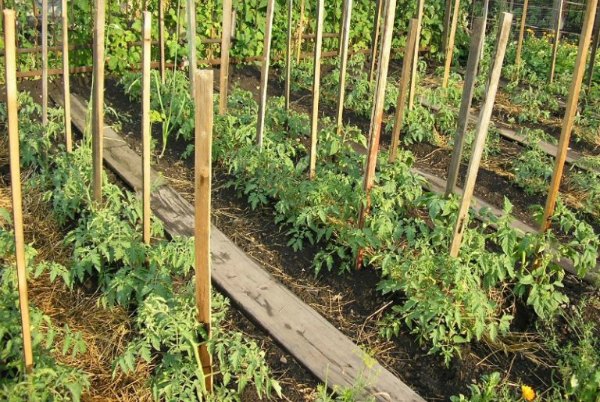
The most commonly used is the individual method of tying with stakes, when they are driven into the ground next to each plant. The height of each peg should be equal to the height of the tomato bush plus 30 cm (this is the depth of immersion in the ground).
Important! It is necessary to consider the height of an adult plant, not a seedling stem! As the tomato grows, you will not change the garter stakes. Therefore, immediately see what is the maximum height of a given variety or hybrid, and count from this.
As supports, you can use trimmings of reinforcement, metal rods, plastic pipes and others.
When the peg is driven in, the plant growing nearby is tied loosely with a cloth, the garter is crossed with a “figure eight” and tied to the peg. Brushes are also attached. You don’t have to tie it tight.
This method has two significant drawbacks when used for indeterminate tomatoes.
- A growing culture (and it can reach 2 m in height) must be constantly tied up, moving the ties up the support.
- And in the case of a bountiful harvest, the plant can collapse along with supports and garters, unable to withstand the weight of the fruit.
Tapestry tying method
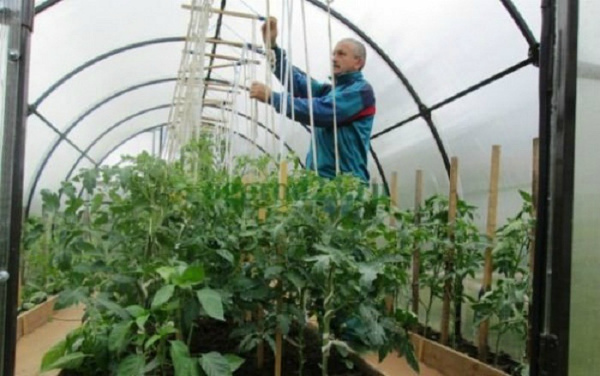
The trellis method is more reliable – but also more complicated. To form trellises, you must first form rows of supports along the beds, driving in long stakes and pulling several wires or strings with a height difference of 30-40 cm.
As the tomato bush grows, its stems and branches are first laid behind a stretched wire on one side, then on the other, so that such a braid keeps the growing tomato bush in an upright position. Brushes with pouring tomatoes also need to be tied up or hung with special hooks.
Gardeners note the advantage of this method in that it is not necessary to pinch the bushes in one or two stems, you can leave a larger amount and thus increase the yield.
With a linear trellis garter:
- The same pegs are driven in, only the horizontal wire is pulled alone – along the very top.
- “Leashes” are tied on it over each plant, which are attached around the stem in its lower part.
- Further, the growing stem is simply wrapped around the leash as it grows.
Shield garter
Installed lattice shields (grids) are a more expensive method than trellises, and even more so pegs.
The method is convenient in that plants planted along such nets can be tied to different parts of the shields as they grow with twine or other materials, and both stems and brushes are tied up.
The lattice structures themselves are installed by tying to a series of pegs with wire. Such meshes can be both metal and wire.
The disadvantage of the shield garter is that when growing tomatoes on an industrial scale, the installation of such structures greatly increases the cost of the final product.
How to tie up tomatoes. Free loop method – video
other methods
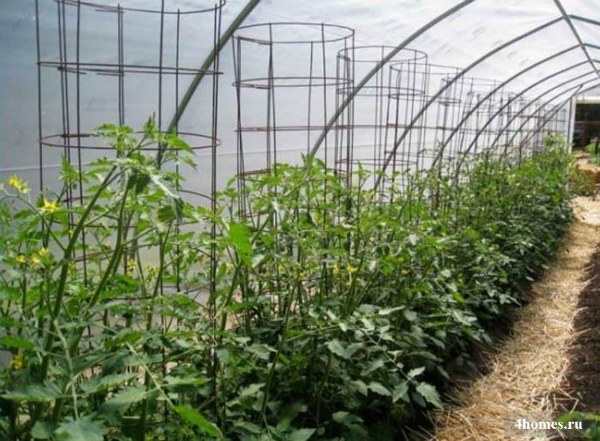
The frames are a lattice structure that surrounds each tomato bush along the perimeter. You can not tie the plant to it, the stem will find support from all sides.
The disadvantage of such support is the difficult harvesting.
Also used are methods such as portable structures (trellises).
Caring for tomatoes in a greenhouse

The main measures for the care of tomatoes in the greenhouse:
- watering;
- pollination;
- ventilation.
Tomatoes do not like waterlogged soil, they start watering 10-12 days after planting.
Before flowering, 4 liters of water are required per square meter of the greenhouse, after the plant has blossomed and during fruiting – 12 liters. You need to water once a week.
Water must be defended and the temperature measured. If it is below 22°C, it must be heated to that temperature.
An increase in humidity is dangerous not only because the risk of developing fungal infections increases, but also because pollination is difficult. In moist air, pollen “damps”, clumps and becomes heavier.
To avoid problems with pollination, you need to lightly shake the tomato bushes daily, and then spray. Optimal conditions – daytime, sunny weather.
Ventilation should be carried out to provide oxygen and moisture regulation, as well as to attract insects necessary for pollination of plants. But at the same time, it is necessary to ensure that the night temperature does not go beyond 16-20 ° C, and the daytime temperature does not exceed 20-22 ° C.
Top dressing is necessary for growing a bountiful harvest and good taste of fruits. It is necessary to start feeding tomatoes before the formation of the first ovary.
Tips from seasoned gardeners

- As a top dressing, you can use both standard liquid mullein, wood ash and superphosphates, as well as very healthy herbal teas.
Even the usual tea leaves used as top dressing are rich in useful substances, and the tannins contained in it effectively disinfect the soil.
- So that the yield does not fall and the soil is not depleted, you should not forget about such useful crops as green manure.
Legumes and cruciferous plants should be planted in the autumn after the old soil has been removed from the shovel bayonet in the greenhouse and fresh soil has been laid. After green manure crops have grown, compost and other organic matter are laid directly on them. Such top dressing of the soil will allow you to grow a good crop.
- After weeding the beds, it is not necessary to throw away weed plants: you can collect them in containers (vat, barrel), pouring warm water and adding cow dung. Such top dressing will be more useful if you add fresh nettle to it.
- A well-made curb between the rows will facilitate the work of the greenhouse: this facilitates maintenance, prevents soil from spilling from the beds.
Experienced gardeners advise planting basil along such borders: this spicy plant will not only replenish the stock of harvested spices, it also forms a wonderful symbiosis with tomatoes, making the taste of ripe fruits more vivid.
How to tie tomatoes (tomatoes) – video
Tying tomatoes in the open field and in greenhouses is similar in general terms, but differs in details. These details need to be known and observed so that the tomatoes grow healthy and give a good harvest of tasty fruits. Also, the right garter facilitates all types of care in the greenhouse and harvesting the ripe crop.
